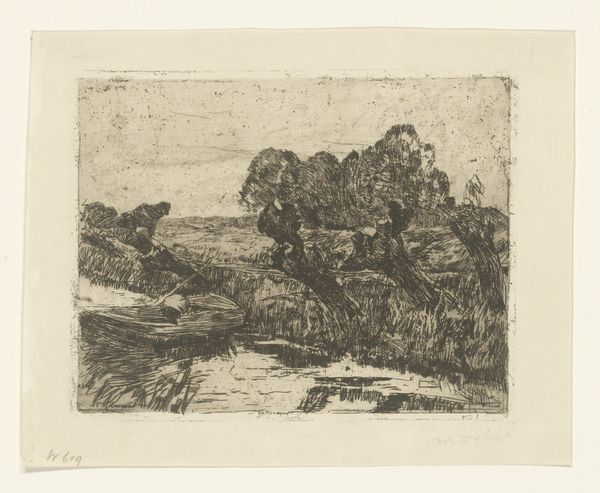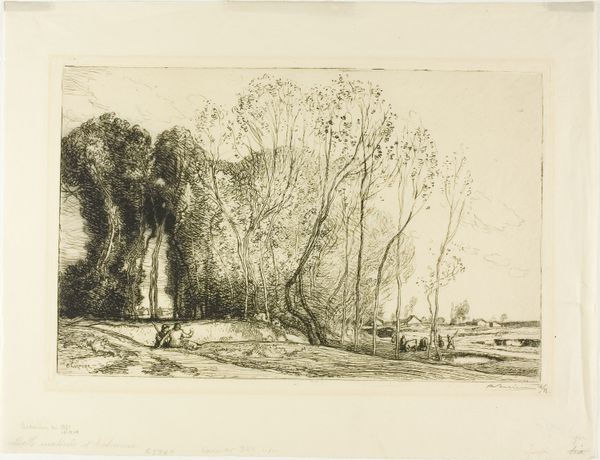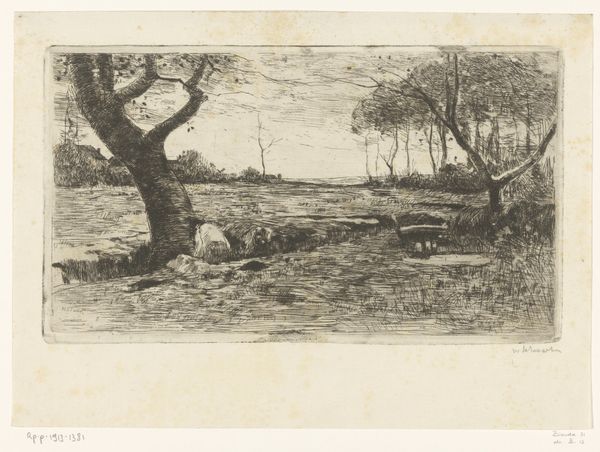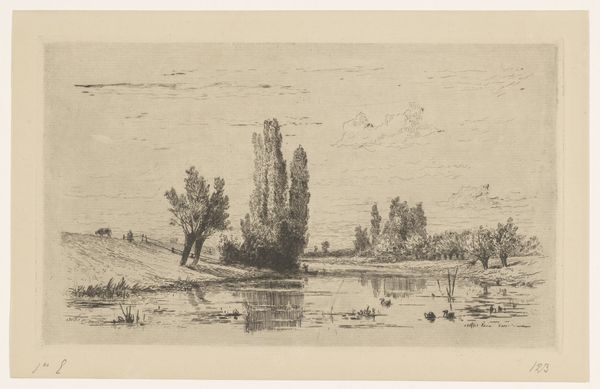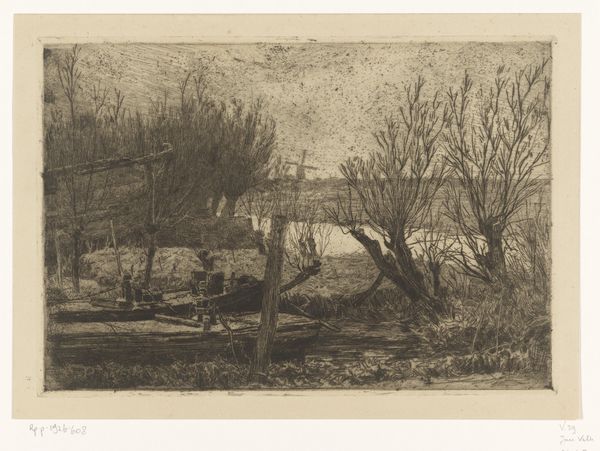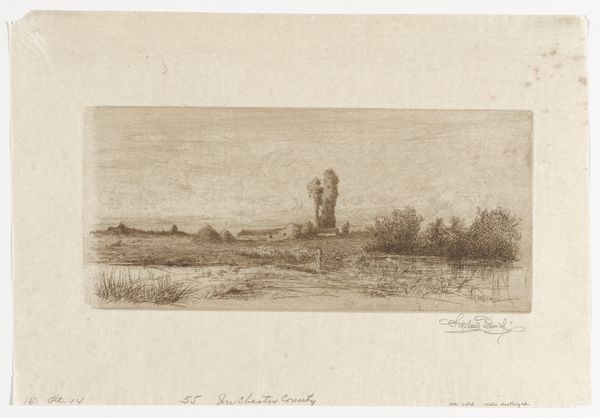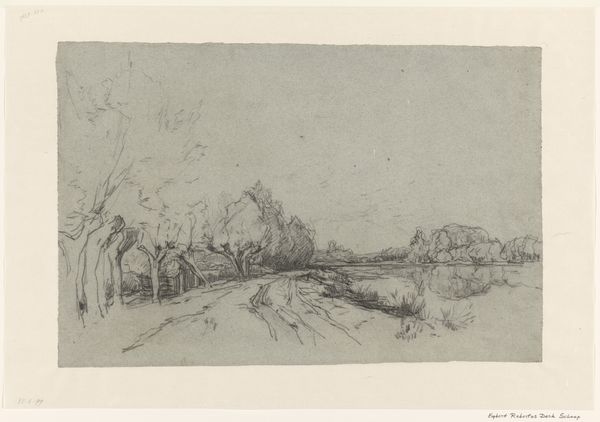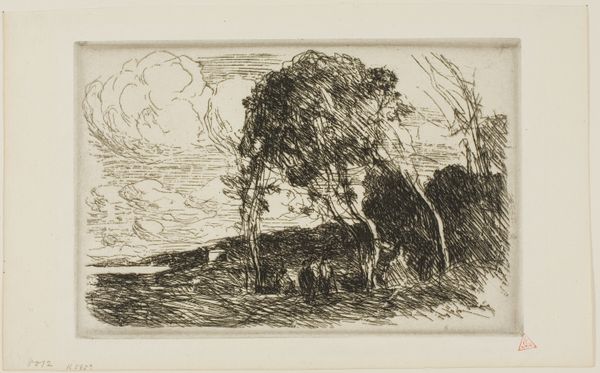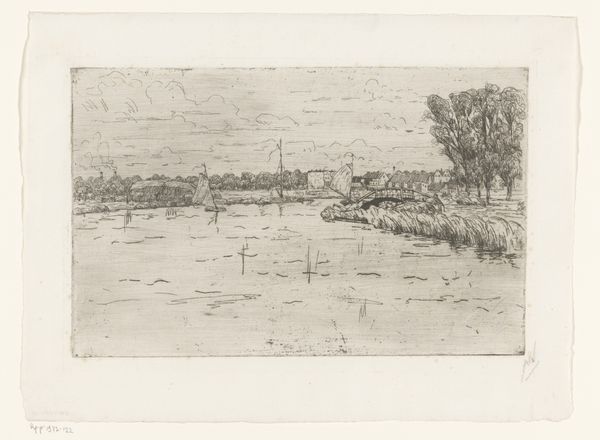
Dimensions: 9 1/4 x 13 7/8 in. (23.5 x 35.24 cm) (plate)11 1/16 x 16 1/16 in. (28.1 x 40.8 cm) (sheet)
Copyright: Public Domain
Curator: Let’s turn our attention to this rather subtle work by Paul Borel. Titled "Le Deux Pelereus à la Fontaine", or "Two Pilgrims at the Fountain," it's an etching created in 1891. You can find it here at the Minneapolis Institute of Art. Editor: You know, it whispers to me of loneliness. It's all rendered in shades of grey, a kind of hushed landscape where the only color seems to come from the unseen. The figures are so small, swallowed up by the trees and vast sky. Curator: Absolutely, that melancholic feeling is key. Consider the socio-political landscape of the time: rural life undergoing immense change. The art world, like any cultural arena, grappled with shifts. Borel presents a quiet scene reflecting traditional life perhaps fading away. These pilgrims at a fountain--a place of rest and, potentially, reflection--symbolize larger societal movements. Editor: "Pilgrims"...that suggests a journey, right? Maybe they’re searching for something…or leaving something behind. And a fountain...water for sustenance, for renewal? The lines of the etching make the whole piece feel sort of…ephemeral. Fleeting. Curator: Yes! That's Impressionism coming into play. Note Borel’s use of line. He doesn't give us sharply defined edges. The blurry, almost dreamlike quality highlights a move away from purely representational art towards capturing an emotion. This kind of image was starting to have its moment in Parisian exhibitions. A public turning away from strict academic approaches to nature Editor: And doesn't that make you wonder about the public’s expectations? Was this calming simplicity embraced, or seen as… insufficient? As if life’s complexities were being smoothed over into simple aesthetics? Curator: A valid point. Critics had diverse responses to works that strayed from accepted art theories of representation and public messaging. This intimate etching could be considered both nostalgic and radical given shifting societal perceptions. It poses some critical questions on the direction of modern landscape art in the latter nineteenth century Editor: Ultimately it comes down to the fact that beauty exists even in desolation. That little sliver of hope, that search, in these solitary figures really hits hard. Curator: It’s that complexity—the intersection of personal emotion and social history—that continues to make this etching so thought-provoking. It really draws you into these "pilgrims" quest. Editor: A perfectly simple observation from a time that has already turned away for a century. Art to consider…
Comments
No comments
Be the first to comment and join the conversation on the ultimate creative platform.

